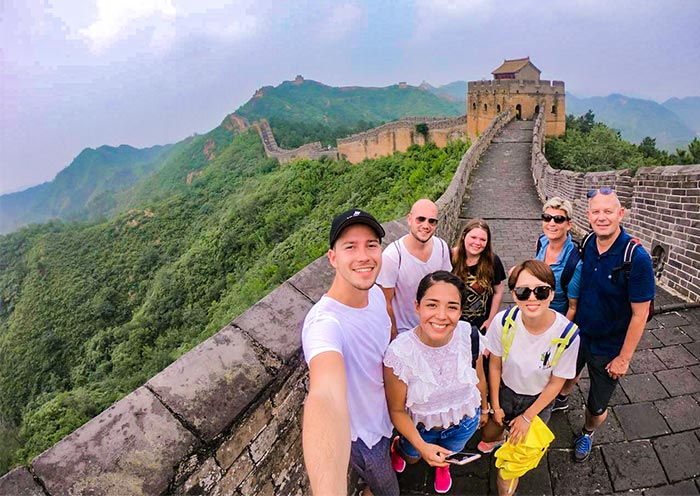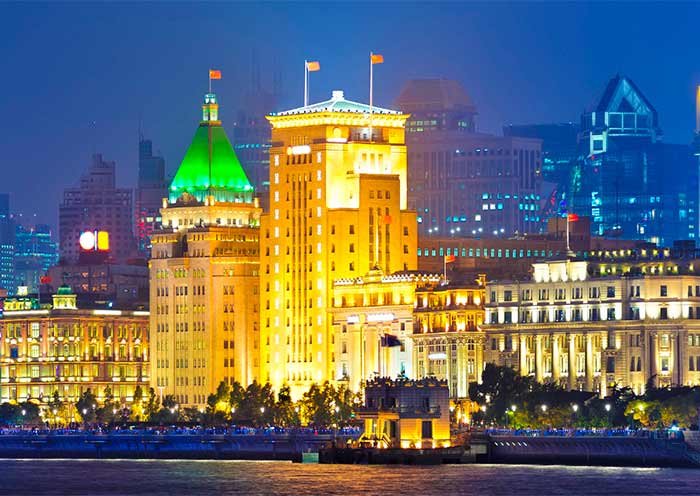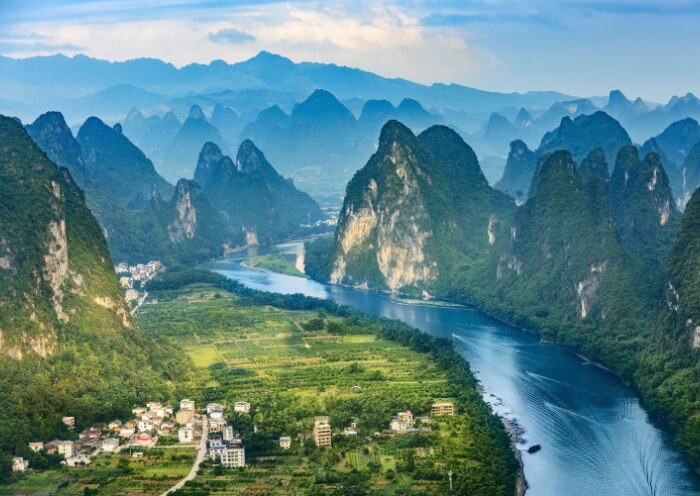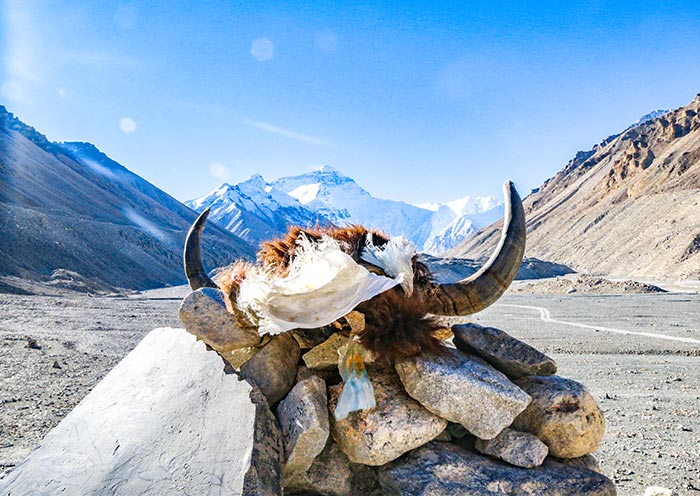
With over 100 destinations to choose from, China offers a vast array of options for foreign travelers. Whether you prefer the grandeur of the Great Wall as it snakes through rugged landscapes or the tranquil allure of Hangzhou's West Lake, each step in this remarkable country unveils a new facet of its beauty and culture. Which destination in China captures your imagination?
In Beijing, the imposing Forbidden City stands as a testament to imperial grandeur, its opulent halls echoing with stories of emperors past. Journey to Xi'an and witness the awe-inspiring Terracotta Army, an army frozen in time, guarding the eternal legacy of the Qin Dynasty. For a taste of cosmopolitan China, venture into the vibrant heart of Shanghai. Its neon-lit skyline paints a mesmerizing backdrop to a city pulsating with energy and creativity. And in Chengdu, immerse yourself in the culinary delights of Sichuan cuisine, while encountering the beloved Giant Panda in its natural habitat.
Nature enthusiasts are rewarded with surreal landscapes that defy imagination. Marvel at the towering limestone pillars of Zhangjiajie, the inspiration behind the floating mountains of "Avatar." Seek solace amidst the mist-laden peaks of Huangshan, a painter's dream come to life.
At Asia Odyssey Travel, we have dedicated teams in multiple destinations, ready to provide you with first-hand travel information tailored to each location. Whether you're planning a trip to Beijing, Xian, Guilin, Shanghai, or any other destination, we are here to ensure you have the most up-to-date and reliable guidance for your China Tour.
(Updated Travel Guide in Each Destination with Tailor-made Experiences)





How many days to spend in Beijing for a tour? The ideal length of time to explore in Beijing depends on your interests, schedule, and budget. However, to get a good feel for the city and see the major attractions, we would recommend to spend at least 2-4 full days in Beijing.
During this time, you can visit iconic landmarks such as the Great Wall, Forbidden City, Summer Palace, and Temple of Heaven, discover historic neighborhoods like the Hutongs, sample delicious food (such as Beijing Duck & dumplings) at local eateries and markets, and experience the vibrant culture and nightlife of the city. Of course, there are many other interesting sites to explore in and around Beijing, such as the Confucius Temple (Guozijian), Lama Temple (Yonghegong), and the Olympic Park (Birds' Nest & Water Cube), among others.
When you have 5 or more days, you can travel to another city like Xian by high speed train after touring Beijing.
The Great Wall of China is a vast and complex system of fortifications that stretches across several Chinese provinces. While some of the most popular and well-known sections of the wall are located near Beijing, there are many other sections of the wall that are worth visiting and can be accessed from other cities. Here are the places to visit the Great Wall of China:
1.Great Wall of Beijing: The most popular and well-known sections of the wall are located near Beijing, such as the Mutianyu Great Wall, Jingshanling Great Wall, Simatai Great Wall, Jiankou Great Wall, and Badaling Great Wall.
2. Great Wall of Shanhaiguan: This section of the Great Wall is located in Qinhuangdao, a coastal city in Hebei province. It is known for its unique architecture and stunning coastal views.
3. Great Wall of Jiayuguan: This section of the Great Wall is located in Jiayuguan, a city in Gansu province. It is known for its western-style fortifications and desert landscapes.
4. Great Wall of Dunhuang: This section of the Great Wall is located in Dunhuang, a city in Gansu province. It is known for its colorful murals and stunning desert landscapes.
5. Great Wall of Henan Province: There are several sections of the Great Wall located in Henan province, including the Yuntai Mountain section and the Yinxu section, which is known for its ancient ruins.
6. Great Wall of Inner Mongolia: There are several sections of the Great Wall located in Inner Mongolia, including the Hulunbuir Grassland section and the Hohhot section, which is known for its unique architecture.
Terracotta Warriors and Horses Museum Layout
The Terracotta Warriors and Horses Museum, which houses the main pits containing the warriors, is divided into three sections: Pit 1, Pit 2, and Pit 3.
Pit 1: The largest and most impressive of the three pits, Pit 1, houses the main army formation, with over 6,000 figures (2,000 are currently on display). The pit covers an area of approximately 14,260 square meters, equivalent to the size of an airplane hangar.
Pit 2: This pit is notable for its complex layout and variety of military figures, including standing and kneeling archers, cavalry, charioteers, and infantry. Despite being smaller than Pit 1, Pit 2 offers a richer diversity of the army, providing further insights into ancient military strategy and the mysteries of the army array.
Pit 3: Known as the command center, Pit 3 is the smallest but considered the most important pit due to its perceived role as the army's "headquarters."
Our Recommended Visiting Route: Pit 1 – Pit 3 – Pit 2 - Exhibition Hall
Begin with Pit 1 as it's the largest and most stunning, offering a grand first impression. Spend ample time here observing the soldiers' intricate details and formations. Next, move on to Pit 3, where you will see the army's "headquarters." Then, proceed to Pit 2, where you will encounter a more diverse array of military figures. Finally, conclude your visit at the Exhibition Hall, where you can marvel at the history of the Terracotta Warriors and Horses.
Suggested Visiting Time: 2-3 hours
The Longji Rice Terraces are primarily inhabited by the Zhuang and Yao ethnic minority groups. These two ethnic groups have a long history in the region and have played a significant role in the cultivation and preservation of terraces.
The Zhuang people are the largest ethnic minority group in China and have a strong presence in Guangxi Zhuang Autonomous Region, where the Longji Rice Terraces are located. They have their own unique language, culture, and traditions, and are known for their agricultural practices and skilled craftsmanship.
The Yao people, also known as the Mien or Iu Mien, are another ethnic minority group that resides in the Longji Rice Terrace area. They have their own distinct language, customs, and clothing, and are known for their expertise in herbal medicine and traditional embroidery.
Visitors to the Longji Rice Terraces have the opportunity to interact with the local Zhuang people in Ping’an Village and Yao people in Dazhai Village and Huangluo Yao Village, learn about their cultural heritage, and appreciate their contributions to the preservation of the terraces. The ethnic minority villages in the area offer insights into their traditional way of life, including their unique architecture, festivals, and traditional clothing.
The number of days you need in Guilin depends on your travel preferences and the depth of exploration you desire. Usually, it is suggested to spend at least 2 days in Guilin and Yangshuo to experience the main highlights. It allows you to visit popular attractions such as the Li River, Elephant Trunk Hill, Reed Flute Cave, and explore the picturesque Yangshuo countryside.
However, if you wish to delve deeper into the region and immerse yourself in its natural beauty, culture, and activities, it is recommended to allocate 3 to 6 days or more. You can have in-depth exploration of attractions like the Longji Rice Terraces, Yangshuo's karst landscape, Xingping Town on the bank of the Li River, ethnic minority villages, cycling or hiking adventures, and leisurely river cruises.
You can check more on: How to Plan a Guilin Tour | Ultimate Guilin Planning Guide >>
Zhangjiajie is a small city but has many things to see and do. Travelers are highly recommended to spend at least 3 days in Zhangjiajie, and most of them prefer to spend 4 days, while some may even plan for 5 days in this Avatar destination.
The number of days to spend in Zhangjiajie depends on your interests and the activities you wish to engage in. However, to fully explore the highlights of Zhangjiajie and its surrounding areas, a recommended duration is around 3 to 5 days. This timeframe allows you to visit popular attractions such as the Yuanjiajie Avatar Mountains (Zhangjiajie National Forest Park in Wulingyuan), Tianzi Mountain, Zhangjiajie Grand Canyon, and Tianmen Mountain.
Within 2 to 3 days, you can immerse yourself in the stunning natural landscapes of both Wulingyuan (world heritage) and Tianmen Mountain. Within 4 to 5 days, you can also explore other nearby attractions, such as the glass bridge at Zhangjiajie Grand Canyon and the charming Fenghuang Ancient Town. Of course, if you have more time available, you can extend your stay to further immerse yourself in the region's beauty and delve deeper into the local culture.
A Yangtze River Cruise can last from 4 to 11 days, the most common options are 4-5 night cruises between Chongqing to Yichang that cover key attractions such as the Three Gorges, Three Gorges Dam.
Chongqing to Yichang Downstream: 4 Days and 3 Nights
Yichang to Chongqing Upstream: 5 Days and 4 Nights
Wuhan to Shanghai Downstream: 7 Days and 6 Nights
Shanghai to Wuhan Upstream: 7 Days and 6 Nights
Chongqing to Shanghai Downstream: 11 Days and 10 Nights
Shanghai to Chongqing Upstream: 11 Days and 10 Nights
The number of days you should spend in Shanghai depends on your interests, the activities you plan to undertake, and the pace at which you prefer to explore the city. However, a suggested duration for a well-rounded visit to Shanghai is around 1 to 5 days. This time frame allows you to experience the city's major attractions, delve into its rich culture, and also have some time for day trips to nearby destinations. Contact us to tailor your Shanghai Tour according to your interests and the experiences you seek.
Here's a sample itinerary to give you an idea:
Day 1: Explore the Bund, visit Shanghai Museum, wander along Nanjing Road, and enjoy the vibrant atmosphere of the city center. In the evening, take a Huangpu River cruise to admire the illuminated skyline.
Day 2: Discover the traditional side of Shanghai by visiting Yu Garden, City God Temple, and exploring the charming alleys of Tianzifang or Xintiandi. Indulge in local cuisine and experience Shanghai's vibrant street food scene.
Day 3: Take a day trip to a nearby water town such as Suzhou or Zhouzhuang, where you can experience the classical gardens, historic architecture, and tranquil canals.
Day 4: Visit modern landmarks like the Shanghai Tower, Shanghai World Financial Center, and the Shanghai Urban Planning Exhibition Center to gain insight into the city's futuristic development. Explore the trendy district of Jing'an or French Concession for shopping and dining.
Day 5: If you have an extra day, consider another day trip to Hangzhou to visit the stunning West Lake, and Lingyin Temple, and experience the famous Longjing tea culture.
Of course, you can adjust this itinerary based on your preferences and the specific attractions you wish to prioritize. Shanghaihas a lot to offer, including museums, art galleries, markets, parks, and a vibrant nightlife scene. So, the more time you have, the more you can explore and immerse yourself in the city's diverse offerings.
Hong Kong offers a range of attractions worth exploring, including Victoria Peak (太平山顶), Hong Kong Disneyland (迪士尼), Ocean Park (海洋公园), Tian Tan Buddha (天坛大佛), Hong Kong Museum of History (香港历史博物馆), Avenue of Stars (星光大道), and the bustling markets like Temple Street Night Market (庙街夜市) and Ladies' Market (女人街).